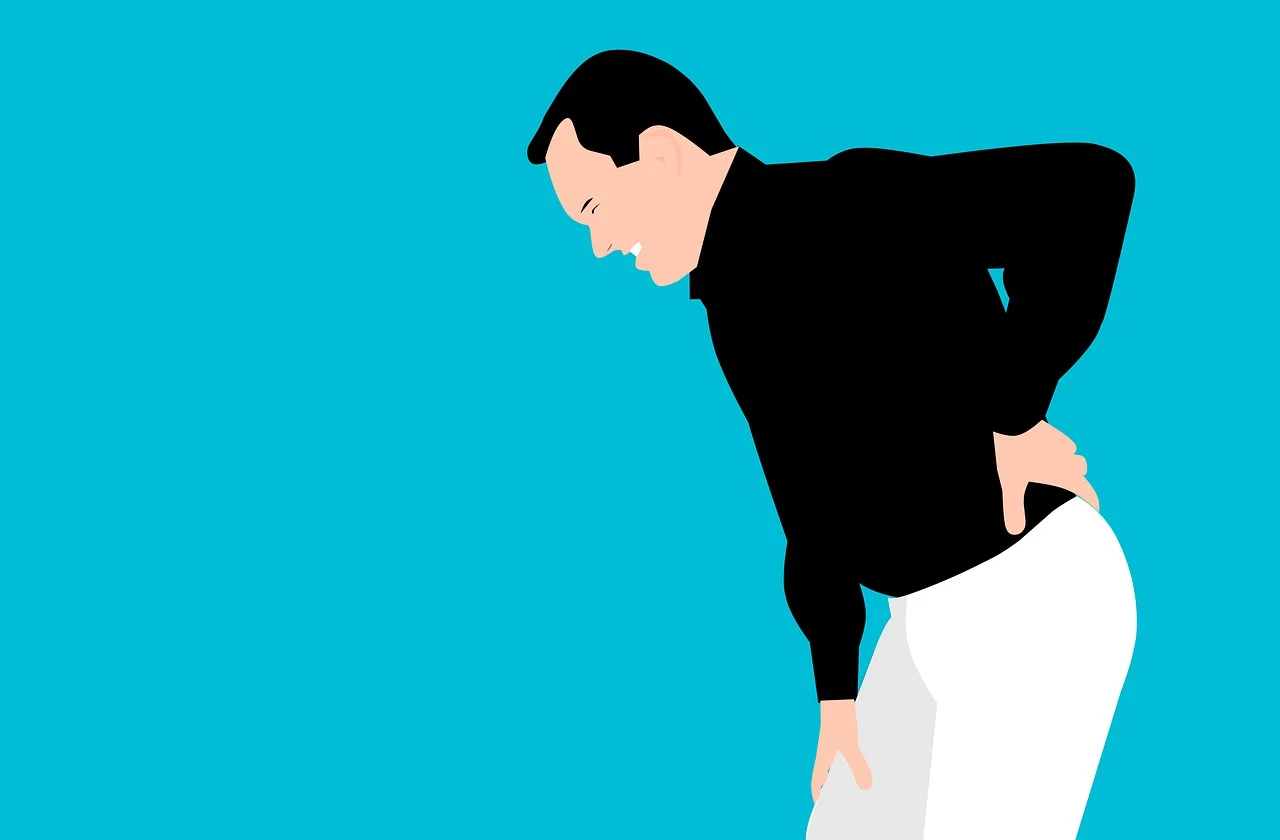

Main Causes of Back Pain: Understanding Factors
What Are The Main Causes Of Back Pain?
Unfortunately, such a large percentage of people fall victim to back pain at some point during their lives, and many of these sufferers have to deal with near-constant discomfort as a result of their issues. Back pain can stop you from taking part in so many different tasks and activities, and it can have a knock-on impact on the rest of your health and wellbeing if left untreated for a considerable period of time.
What causes back pain? This guide aims to explain some of the most common causes of back pain, allowing you to recognize and avoid such triggers so that you can take great care of your back for as long as possible.
Types of Back Pain
Medical professionals have categorized the different types of back pain based on their intensity and the impact that they have on your daily life. Types of back pain can include:
Acute back pain – can occur suddenly without warning, usually lasting several days or a couple of weeks before subsiding.
Subacute back pain – can occur suddenly or develop over time, lasting from 4 weeks to as long as 3 months.
Chronic back pain – can occur quickly or slowly, lasting longer than 3 months without any signs of slowing down.
The Main Causes Of Back Pain
Symptoms associated with back pain can range from mild pain in a specific location that fades over time to more intense pain that spreads all across your back and won’t seem to budge. It’s also possible for the pain to spread elsewhere in more severe cases, reaching other areas of your body like your leg, buttocks or abdomen. The intensity and duration of your back pain can vary, depending on the root cause of your discomfort and the type or frequency of the treatment that you seek. Some of the main causes of back pain include:
Sprains & Strains
Sprains and strains are some of the most common causes of back pain due to the fact they’re particularly hard to avoid, as any kind of lifting, twisting or bending can lead to serious discomfort when done incorrectly. The most frequently reported sprains and strains that lead to back pain are things like sporting injuries that happen while exercising, trips, slips and falls or lifting particularly heavy objects.
Strains and sprains can cause a variety of different problems, including soft tissue damage, inflammation, swelling and bruising, and even muscle spasms. Your normal day to day life can be severely impacted if you choose not to resolve your sprains and strains, as the pain can become chronic and lead to further issues later down the line.
Diseased or Ruptured Disc
Inside your spine are discs which act as shock absorbing cushions sitting in between your vertebrae (the larger bones that make up your spinal column). If your spinal column were to tear open allowing the discs inside to dislodge, then they can put pressure on nearby spinal nerves causing a slipped, ruptured or herniated disc.
A ruptured disc is a serious condition as not only can it lead to severe lower back pain, it can also cause a shooting pain which travels down the back of your legs which is referred to in medical terms as sciatica. If you do fall victim to a ruptured disc, then your sciatica may worsen when you bend with straight legs or sit down – this is due to the fact that such movements pull on the sciatic nerve.
Osteoarthritis
Osteoarthritis affects millions of people worldwide, making it the most common form of arthritis. Osteoarthritis occurs when the protective cartilage which cushions and protects the end of your bones begins to wear down, leading to pain, stiffness, a lack of flexibility, popping and cracking, and even bone spurs that develop over time. Osteoarthritis can affect your back, causing changes in the shape and strength of your bones while encouraging deterioration of connective tissues which keep your joints together. You can also expect to fall victim to noticable inflammation when experiencing osteoarthritis related back pain.
Osteoporosis
As you get older, your bones can start to become thinner and weaker which can lead to a condition called Osteoporosis. Osteoporosis is a difficult disease to control due to the fact that no symptoms generally occur until a bone breaks, so people often realize they have the condition after a very painful fracture occurs. The effort that’s needed just to hold up your body can be more than enough to trigger a spinal fracture if you are suffering from osteoporosis, which can of course lead to severe back pain. Unfortunately, Osteoporosis is a very common condition in those over 50, and it’s a leading cause of back pain in elderly patients.
Pregnancy & Weight Gain
Both pregnancy and weight gain can cause back pain due to the extra pressure that’s put on your joints among other factors. Back pain during pregnancy is very common, as the change in your hormones, the added weight of your baby and the change in your center of gravity and subsequent posture can all contribute towards an increased risk of discomfort.
When you gain excess weight, especially in your midsection, back pain can occur due to the additional strain put on your muscles while they are trying to support your body so that it stays in an upright position. Obesity can wreak havoc for your body’s natural alignment, which helps to explain why weight gain is a main cause of back pain.
Let Us Help You!
If you experience back pain or discomfort, then we are here to help. We offer a range of back pain relief services that can aid you in gaining back control over your symptoms, giving you the opportunity to improve both your health and quality of life. Reach out to a member of our friendly team at CT Disc Centers to find out more about how we can aid you in achieving back pain relief today.

Dr. James J. Dalfino is the President and Clinic Director of Connecticut Disc and Laser Therapy Centers. He has been in private practice 23 years and specializes in non-surgical treatments for today’s most chronic conditions.
SUBSCRIBE
CATEGORIES


Main Causes of Back Pain: Understanding Factors
What Are The Main Causes Of Back Pain?
Unfortunately, such a large percentage of people fall victim to back pain at some point during their lives, and many of these sufferers have to deal with near-constant discomfort as a result of their issues. Back pain can stop you from taking part in so many different tasks and activities, and it can have a knock-on impact on the rest of your health and wellbeing if left untreated for a considerable period of time.
What causes back pain? This guide aims to explain some of the most common causes of back pain, allowing you to recognize and avoid such triggers so that you can take great care of your back for as long as possible.
Types of Back Pain
Medical professionals have categorized the different types of back pain based on their intensity and the impact that they have on your daily life. Types of back pain can include:
Acute back pain – can occur suddenly without warning, usually lasting several days or a couple of weeks before subsiding.
Subacute back pain – can occur suddenly or develop over time, lasting from 4 weeks to as long as 3 months.
Chronic back pain – can occur quickly or slowly, lasting longer than 3 months without any signs of slowing down.
The Main Causes Of Back Pain
Symptoms associated with back pain can range from mild pain in a specific location that fades over time to more intense pain that spreads all across your back and won’t seem to budge. It’s also possible for the pain to spread elsewhere in more severe cases, reaching other areas of your body like your leg, buttocks or abdomen. The intensity and duration of your back pain can vary, depending on the root cause of your discomfort and the type or frequency of the treatment that you seek. Some of the main causes of back pain include:
Sprains & Strains
Sprains and strains are some of the most common causes of back pain due to the fact they’re particularly hard to avoid, as any kind of lifting, twisting or bending can lead to serious discomfort when done incorrectly. The most frequently reported sprains and strains that lead to back pain are things like sporting injuries that happen while exercising, trips, slips and falls or lifting particularly heavy objects.
Strains and sprains can cause a variety of different problems, including soft tissue damage, inflammation, swelling and bruising, and even muscle spasms. Your normal day to day life can be severely impacted if you choose not to resolve your sprains and strains, as the pain can become chronic and lead to further issues later down the line.
Diseased or Ruptured Disc
Inside your spine are discs which act as shock absorbing cushions sitting in between your vertebrae (the larger bones that make up your spinal column). If your spinal column were to tear open allowing the discs inside to dislodge, then they can put pressure on nearby spinal nerves causing a slipped, ruptured or herniated disc.
A ruptured disc is a serious condition as not only can it lead to severe lower back pain, it can also cause a shooting pain which travels down the back of your legs which is referred to in medical terms as sciatica. If you do fall victim to a ruptured disc, then your sciatica may worsen when you bend with straight legs or sit down – this is due to the fact that such movements pull on the sciatic nerve.
Osteoarthritis
Osteoarthritis affects millions of people worldwide, making it the most common form of arthritis. Osteoarthritis occurs when the protective cartilage which cushions and protects the end of your bones begins to wear down, leading to pain, stiffness, a lack of flexibility, popping and cracking, and even bone spurs that develop over time. Osteoarthritis can affect your back, causing changes in the shape and strength of your bones while encouraging deterioration of connective tissues which keep your joints together. You can also expect to fall victim to noticable inflammation when experiencing osteoarthritis related back pain.
Osteoporosis
As you get older, your bones can start to become thinner and weaker which can lead to a condition called Osteoporosis. Osteoporosis is a difficult disease to control due to the fact that no symptoms generally occur until a bone breaks, so people often realize they have the condition after a very painful fracture occurs. The effort that’s needed just to hold up your body can be more than enough to trigger a spinal fracture if you are suffering from osteoporosis, which can of course lead to severe back pain. Unfortunately, Osteoporosis is a very common condition in those over 50, and it’s a leading cause of back pain in elderly patients.
Pregnancy & Weight Gain
Both pregnancy and weight gain can cause back pain due to the extra pressure that’s put on your joints among other factors. Back pain during pregnancy is very common, as the change in your hormones, the added weight of your baby and the change in your center of gravity and subsequent posture can all contribute towards an increased risk of discomfort.
When you gain excess weight, especially in your midsection, back pain can occur due to the additional strain put on your muscles while they are trying to support your body so that it stays in an upright position. Obesity can wreak havoc for your body’s natural alignment, which helps to explain why weight gain is a main cause of back pain.
Let Us Help You!
If you experience back pain or discomfort, then we are here to help. We offer a range of back pain relief services that can aid you in gaining back control over your symptoms, giving you the opportunity to improve both your health and quality of life. Reach out to a member of our friendly team at CT Disc Centers to find out more about how we can aid you in achieving back pain relief today.

Dr. James J. Dalfino is the President and Clinic Director of Connecticut Disc and Laser Therapy Centers. He has been in private practice 23 years and specializes in non-surgical treatments for today’s most chronic conditions.
Subscribe
Categories

9 Cots Street | Suite 2c | Shelton, CT 06484
Copyright © 2024 | Connecticut Disc and Laser Therapy Centers | All Rights Reserved

